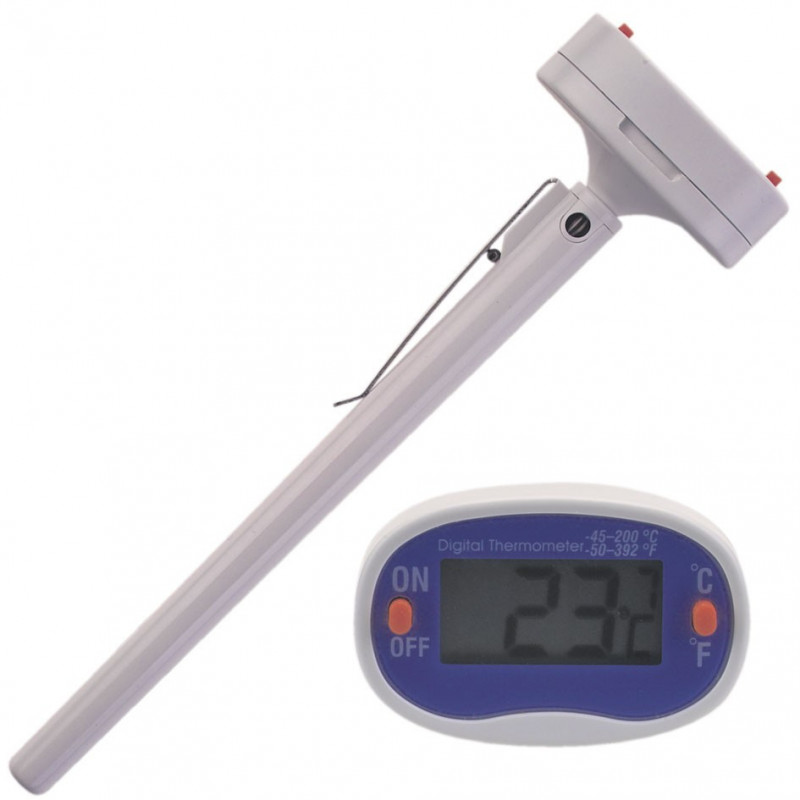




For many treats, maintaining a certain temperature is essential. In a boiled vanilla cream, the egg must not curdle, if chocolate is too hot, it forms small lumps and to prevent the formation of germs in ice cream, various ingredients must be added at the correct temperature. With this thermometer, accurate measurement is no problem.
Data sheet
The digital insertion thermometer is perfectly suited for the precise tempering of couverture. Temperatures of liquid and pasty masses from -45 °C to 200 °C can be measured via the stainless steel insertion needle. The temperature is indicated to an accuracy of 0.1 °C. Thus, this thermometer is suitable for liquid and viscous masses from the food and hobby sector, we especially like to use it for melting couverture, chocolate and cake melts.
Prepare all the ingredients for your creation. This can be, for example, an ice cream base, a vanilla cream or even the liquid for a loaf of bread. If you want to melt or temper a chocolate-like mass, place it in the tempering unit or over a water bath. This way you can turn on the insertion thermometer and place or hold it in the mass. At least one to two centimeters of the probe should be immersed in the mass.
Give the thermometer some time and then read the number on the display. If the mass is heated on the stove, for example, stir it a little at a time. In this way, you prevent burning on the bottom as well as a falsified measurement due to an irregular heat distribution.
Finally, the insertion probe can be cleaned with running water and a little washing-up liquid. Do not hold the entire thermometer under the water, this can be easily cleaned with a damp cloth.
 Correctly temper couverture and chocolate
Correctly temper couverture and chocolate
 Liqueur chocolates
Liqueur chocolates
 Grill bread recipe
Grill bread recipe
 Homemade ice cream cones - The perfect recipe for ice cream
Homemade ice cream cones - The perfect recipe for ice cream

For many treats, maintaining a certain temperature is essential. In a boiled vanilla cream, the egg must not curdle, if chocolate is too hot, it forms small lumps and to prevent the formation of germs in ice cream, various ingredients must be added at the correct temperature. With this thermometer, accurate measurement is no problem.